London Shopping – Stage 2
We are meandering through London’s shopping districts in the second part of our Self Guided Walk Shopping tour. In Stage 1 of the walk we went through some of the smaller specialist districts.
On this stage we visit the mainstream districts including Piccadilly Circus, Carnaby Street, Oxford Street and and Knightsbridge.
We left stage 1 of the walk at China Town, coming into Leicester Square.
These guides focus on the practical aspects of the walk and do not aim to replace a comprehensive guidebook for London. With a reliable London street map or a mapping app on your phone, you’ll easily navigate this route and feel free to make interesting detours and adjustments along the way.
At the end of stage 1 of our London shopping walk had left China Town and Coventry Street and now are in Leicester Square. Leicester Square is at the heart of the Theatre district. It’s a favourite place for visitors to just hang out. It’s worth checking out the theatre kiosk at the southern end of Leicester Square which acts as a clearance outlet for theatre tickets not sold.
Following Coventry Street brings you to Piccadilly Circus, one of London’s main landmarks. The Piccadilly and Bakerloo lines of London’s underground train network stop here. You may wish to start the walk here at Piccadilly Circus.
London Shopping more information
Self guided London shopping walk map
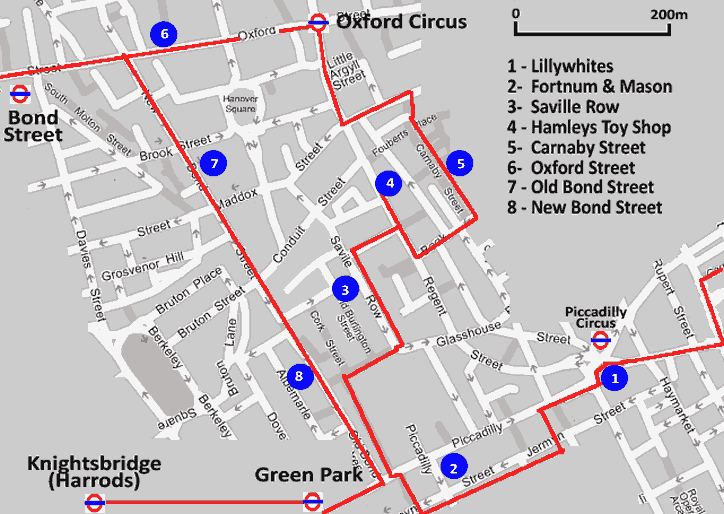
Starting at Piccadilly
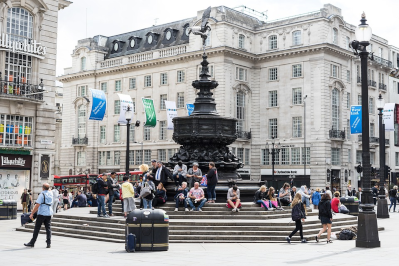
Lillywhites, the large department store, is located on the south side of Piccadilly Circus and specialises in sporting goods of all kinds, even catering for the most minority of minority sports. The shop has attracted the best sports people, celebrities and royalty for over 100 years.
We exit Piccadilly Circus westwards by way of Piccadilly itself (see map above for orientation). Keep to the southern side of Piccadilly (left). You will soon come to number 203, Waterstones – Britain’s largest bookshop.
Jermyn Street
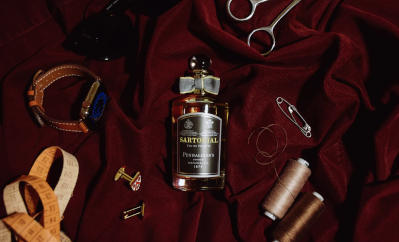
Jermyn Street is full of small gentlemen’s outfitters and tailors which run along its entire length.
Go as far down Jermyn Street as the subject matter appeals. Isaac Newton lived at number 87.
On the right hand side of the street at the junction with Duke Street is Fortnum & Mason. Fortnum & Mason is London’s most prestigious food store, founded in 1707. Suffice to say the store doesn’t stock normal supermarket food and is full of delicacies and hampers.
The store is a supplier to the Royal Family with royal warrants.
The store also has a choice of restaurants and is a favourite place to take a traditional afternoon tea.
A little way past Fortnum & Mason our route leaves Jermyn Street by the Piccadilly Arcade, though you may wish to continue exploring further down Jermyn Street and come back. Piccadilly Arcade is a short arcade leading back to Piccadilly.
Burlington & Piccadilly Arcades
A little way past Fortnum & Mason our route leaves Jermyn Street by the Piccadilly Arcade, though you may wish to continue exploring further down Jermyn Street and come back.
The Arcade is a short walk leading back to Piccadilly. On the opposite side of the road is Burlington Arcade.
Unlike today’s malls, top architects of the day, including John Nash, more famous for Buckingham Palace and flamboyant Brighton Pavilion, designed the early arcades with style.
When you step out onto Piccadilly, be cautious as you cross the bustling street. Directly across from Piccadilly Arcade, you’ll find Burlington Arcade, where our journey continues.
In 1819, they opened Burlington Arcade as Britain’s first arcade. It now contains a string of luxury gift outlets from jewellery and shoes through to antiques and silver. At the end of the arcade turn right into Burlington Gardens (though Cork Street opposite is the centre of fine art in London).
Savile Row – tailors

Second left is Savile Row, home of bespoke tailoring and famous for the ‘Savile Row suite’. Even Hollywood past greats like Cary Grant, Bing Crosby and Frank Sinatra have had suits made here. The street continues to supply the wealthy with their tailored requirements moving along with current fashion.
Furthermore, one of the outfitters is credited with ‘inventing’ the tuxedo, and No.3 was the home of the ‘Apple Group’ and is famous for the Beatles’ last gig in 1969 performed on the rooftop of the building. It has also been rumoured that King Charles has his suits made on Savile Row.
Regent Street & Hamleys toy shop
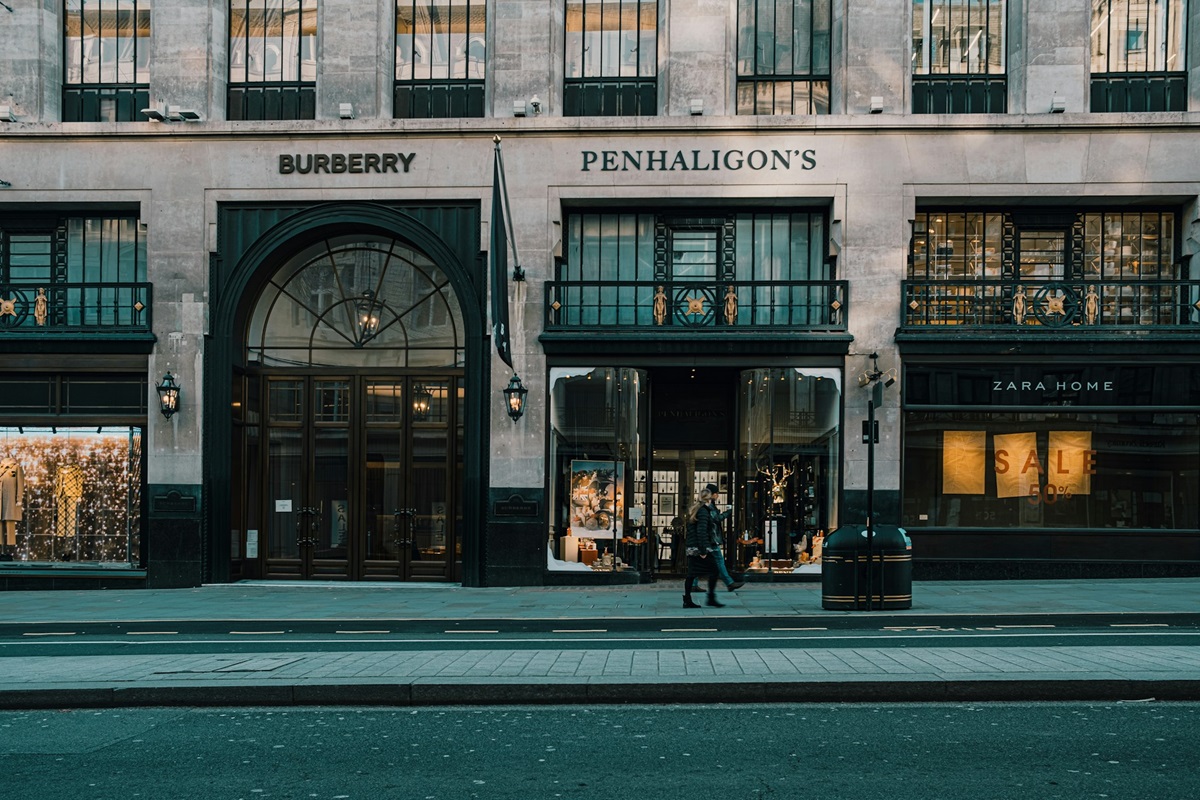
Take the first road right in Savile Row, New Burlington Street which leads on to Regent Street, for London an elegant, wide ‘boulevard’ that the city cut through the narrow streets in the 19th century.
Burberry, the luxury clothing brand has a store on the corner.
Turn left, heading northwards and cross to the opposite, eastern side of Regent Street. Soon you will come to Hamleys toy shop at number 196, Britain’s biggest toy shop dating back to 1760. Hamleys credits itself with inventing table tennis, launching the game exclusively at Hamleys.
The store has evolved and now has more the feel of a big corporate chain store than an independent outlet with charm.
Carnaby Street
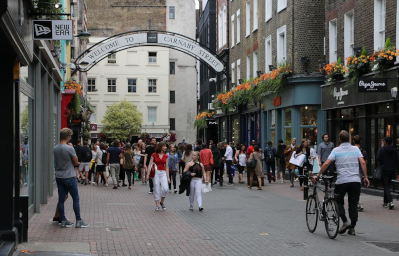
On exiting Hamleys retrace your steps south, taking the second turning on your left (Beak Street), just after a Wedgwood shop. Along Beak Street take the third turning on your left (Carnaby Street).
For a brief period in the 60s, Carnaby Street was the centre of world fashion and epitomised ‘swinging Britain’. Today, outlets showcasing brand named clothes that still attract the young line the pedestrianised street.
Continue right to the end of Carnaby Street just after it kinks to the right, then turn left into Great Marlborough Street.
At the end of Great Marlborough Street, at the junction with Regent Street is Liberty department store on your left, an unmistakable building in Tudor style.
The store was opened in 1875 and specialising in silks and other goods from the East. Not as flamboyant as its early days the department store still continues today with a focus on clothes and fabrics, some of which it makes.
Now turn right up Regent Street to Oxford Circus Underground Station. Then turn left into Oxford Street.
Oxford Street
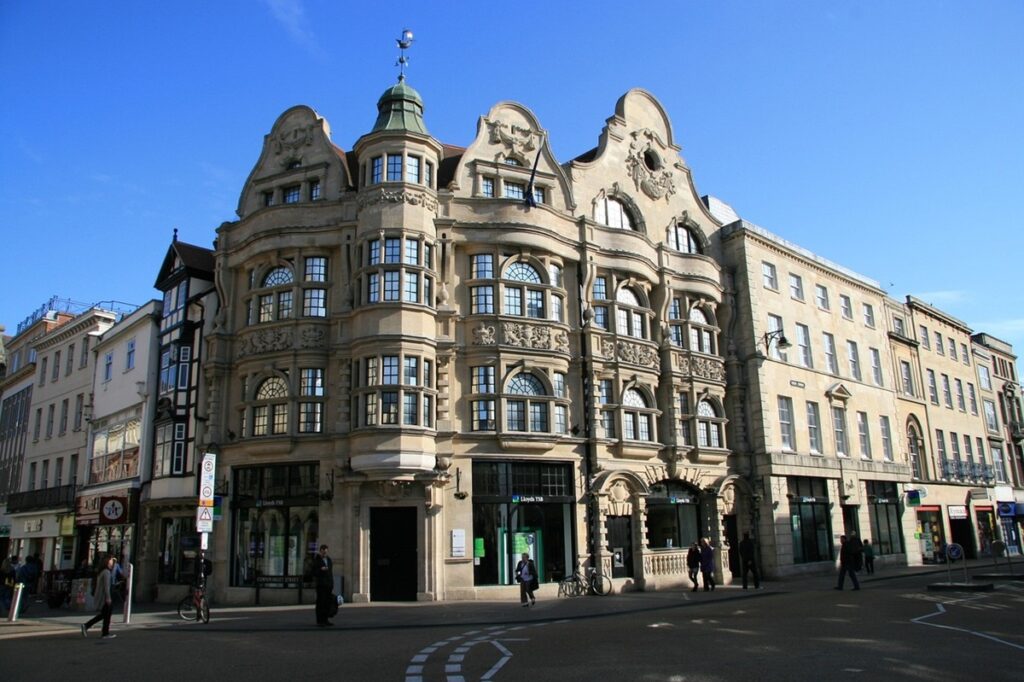
This is the most bustling shopping street in London, home to many famous department stores. You’ll find the flagship locations of several UK chains right here, even though Harrods is situated in Knightsbridge.
Oxford Street extends all the way to Hyde Park at Marble Arch. We’ll take a turn south from Oxford Street roughly a third of the way down, heading into New Bond Street. This is just across from the Debenhams department store and well before Bond Street Underground station.
Bond Street – exclusive luxury goods
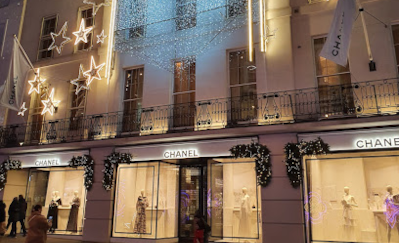
Bond Street is part of Mayfair, London’s most exclusive area. Bond Street connects Oxford Street with Piccadilly. The northern part is called New Bond Street, the southern half Old Bond Street.
All along are the most exclusive world famous luxury brands and fine art shops.
Among others in New Bond Street are Fenwick department store (63), Sotheby’s auctioneers (34/35), Cartier (175), Asprey jewellers (169).
In Old Bond Street, shops include De Beers diamond jewellery (46), Gucci (37), Chanel (26) and Prada (17).
Harrods, Knightsbridge
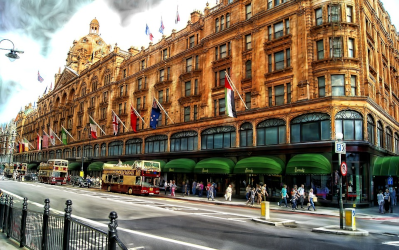
No walk on London’s shops would be complete without Harrods. Unfortunately (for this walk), Harrods is located in Knightsbridge, Kensington, away from the very centre of London. However, it is only a 5-minute ride on the Piccadilly Line underground to Knightsbridge from Green Park.
Magic of London Tour with Cream Tea at Harrods
This is the end of stage two of our shopping walk.
For the first part of this shopping walk please visit:
Stage 1 Tottenham Court Road to Leicester Square